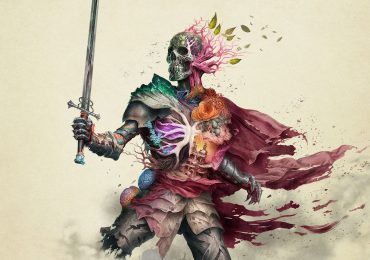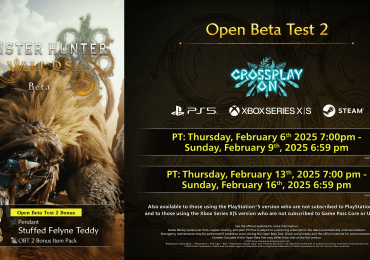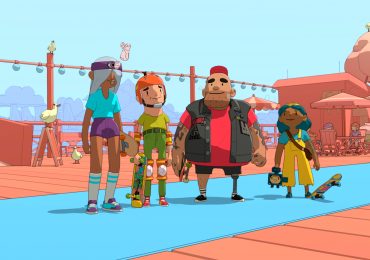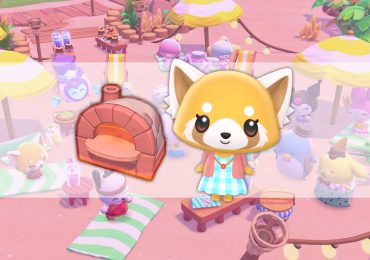Adaptations aren’t easy. Taking something people love in one medium and giving them a new way to fall in love with its stories and characters is always a herculean undertaking, which is part of what makes it so surprising that Riot Games and the team at Fortiche were able to take the vague sketches of story and character in League of Legends and turn it into Arcane, a beautifully animated show full of compelling, complicated characters and a wonderfully tragic story.
To celebrate the release of Arcane’s final season, Riot created tie-in content for all of its biggest games, including fun cosmetic content for Valorant and Arcane’s Ambessa making her way to League as a playable champion. But the development team behind Teamfight Tactics, Riot’s auto battler spinoff of League of Legends, decided to take their Arcane celebration even further by dedicating an entire season to the show.

Teamfight Tactics, like many live-service games, has distinct seasons (called “sets” in TFT) of content that are refreshed every few months. In TFT’s case, that means a total refresh of the units in the game and the addition of new mechanics, all based around a single theme. Past examples of set themes include music, with in-game factions being made up of different genres, or all the different types of magic in Runeterra, where the League universe takes place. The game’s 13th set, which went live Wednesday, is called Into the Arcane, and is themed entirely around the second season of the Netflix show.
Teamfight Tactics technically did an Arcane tie-in for the first season of the show as well, but the game was fairly new then and the crossover only involved the inclusion of a few characters from the show. It was effective, but it was also small, and the team had grander ambitions of an all-out Arcane set to go along with the series finale.
“We basically had this big brainstorm where it was like, What does it mean to have an Arcane set?” Into the Arcane lead producer Winston Baker says. “What do you bring over? What are the elements of the show that are really great for the game? How do we have to adapt the show so that it fits with the theme and tone?”
Unsurprisingly for a show as visually stunning as Arcane, the first step was finding a way to bring Arcane’s gorgeous art style, full of dark colors and sinister tones to match its melancholy story, into TFT, a game generally known for its bright and inviting colors, in a way that stayed true to both projects. That task fell to TFT gameplay art director Tori Ero.

“We really try to have a lot of variety in our [set] themes for players over the course of the year,” Ero says. “I would say this one is probably our darkest set, and maybe art-wise, our least colorful.”
“I remember making the joke to Tori, ‘Yeah, just go make it Arcane, but it has to be TFT, how hard can it be?’” Baker says, laughing. “And she laughed and she’s like, ‘Maybe harder than you think.’ […] Then a week later my jaw dropped. I saw [this] Vander side-by-side [image]. And I was like, Wait, but you did it. I said it as a joke, Take this grimdark show and turn it into something really beautiful for TFT. And then a week later you guys came back and I was like, Oh yeah, that’s it. That’s our angle. You nailed it.”

The key to nailing all this, according to Ero, was a close and careful collaboration with the show’s animation team at Fortiche.
“We were really fortunate to have so many beautiful concepts and existing work from the show that we did pull from,” Ero says. “For the characters, we started with [Fortiche’s] model turnarounds and painted over them for concepts. We pulled in their direct concepts, we pulled shots from the show to be our card art. […] Every step of the way we were able to collaborate directly with them and say like, Hey, what do you think of this? Is this suiting your vision for this character still? Are we on the right track? And I feel like it created a lot of excitement in both directions. They were excited to see how we were adopting the show, and we were really excited to see what they were making for the show and adopt it into the game as well. So I feel like it was just a really healthy relationship that was a lot of fun for this.”
Fortiche’s characters are beautiful and full of intricate details in Arcane, but you rarely see them from the height or top-down angle necessary in a TFT match. This presented a unique challenge for the TFT art team, and resulted in some creative adaptations to Fortiche’s designs — little changes in styling or detail that help communicate important elements of character on smaller models from farther away.

Image: Riot Games
“In Arcane you see a lot of close-up cinematic shots and stuff, but when we’re adapting a character into the champion space, we have to think about things like silhouette,” Ero explains. Another important factor is whether or not the characters are obvious fits for their role, like making sure tanks really felt like tanks. “For example, with Steb, making a big backpack so he looks a little bit more tanky. And also with the angle and the distance that you’re seeing things from, TFT characters are much smaller. So maybe we think a little bit less about expressions and more about exaggerated animations and things like that,” Ero says.
One example of this kind of adaptation work the team was particularly proud of was Renni. Arcane fans will recognize her as the Zaunite with the massive chainsaw that nearly kills Jayce. She looks incredible in the show, but she presented a few different problems for the art team on Into the Arcane.

“[Renni] in the show has this really iconic cape, and we tried for a long time to keep the full cape,” Ero says. “We thought that was so cool, but then how could she have this big cape but be holding this huge chainsaw at the same time?” So the team went back to Fortiche for ideas and got back a few pieces of concept art that didn’t make it into the character’s final design on the show. In that art was a little half-cape that ultimately went straight into TFT as her final design.

Ero said this kind of back and forth was constant in the process of making sure that Into the Arcane’s art perfectly balanced the world of TFT and the world of Arcane. And her team wasn’t alone: The gameplay team drew similar amounts of inspiration directly from Fortiche’s archives.
Adding Arcane characters, particularly those that are original to the show and didn’t come over from League of Legends, is a perfect example of what TFT allows for as an adaptation. League of Legends champions have to be fully pilotable, they have to have unique abilities and animation, they have to be fun to play with and again, they have to interact with the over 150 other champions in the game, and most importantly, they have to manage all of that while also being carefully balanced to have a power level that fits in the game without breaking it. TFT units don’t have to play by the same rules. As long as they’re correctly balanced around their cost, all they need is an array of excellent animations and they’ll fit right into a set. It’s easy to watch the first few episodes of season 2 and instantly clock Sevika as a perfect candidate for a powerful late-game TFT unit — her slot machine arm cooking up a whole mess of random power-ups in fights is exactly the kind of semi-random, but always rewarding, element that TFT excels at. And the TFT team thought so, too.
According to Shawn Elizabeth Main, Into the Arcane’s lead gameplay designer, the team saw Sevika in the show and immediately emailed Fortiche and asked for everything the studio had on the character. “We really wanted her to feel compelling,” Main says. “They sent over a whole folder of documents and our illustrators pored through them, and that’s how we landed on these really cool animations that feel really distinct.”

Of course, that only translates because the development team manages to nail the feeling of Sevika’s kickass episode 2 fight scene for her TFT unit. She’s a five-cost, the most expensive type of unit in the game and a definitive late-game character. And once you finally get her on your board, she feels great. Playing with a powerful Sevika, it’s hard not to feel like Jinx while she’s giddily watching her former nemesis fight Smeech in the grimy alleyways of the Lanes. Her slot machine arm has a chance to roll all kinds of powerful attacks that could throw her anywhere on the battlefield, and just like in the show, each one has a uniquely useful quirk that helps her in surprising ways. She can burn enemies with a flamethrower, leap into the enemy team’s backline to take on their strongest and most vulnerable units, punch enemies into oblivion, or even hit a jackpot and give you some gold — exactly the kind of chance and quasi-luck that make TFT matches fun.

But fitting Arcane into Teamfight Tactics is about more than just the units. The real feat is making them all feel cohesive in the larger set.
“I feel like the trick to it, especially at those early stages, was figuring out the needs of good TFT gameplay, combined with how we can be expressive of the themes and the factions [of Arcane],” Main says. “We have an incredible thematic thing running through the show, we have a lot of characters, images of what they look like in combat and things, which is what TFT needs. But then how do we break that down into the needs of every champion?”
For Main, the answer was all about factions. Arcane’s world is full of different factions vying for power and characters creating small alliances and groups. This made for a perfect fit for TFT, which assigns each unit an Origin that, when played with other units from that same Origin, gives players unique synergy bonuses for their team of units.
The early days of designing the set were all about determining how to represent each faction as an Origin. Main gives the example of the Firelights, the band of hoverboarding rebels led by Ekko. She says the show gives them two good additions right away, with Ekko and Scar. So then the team added Zeri, a League of Legends champion who isn’t in Arcane, but seems like a natural fit to this group with her zippy play style and green-and-yellow color scheme. The next trick was figuring out what kind of bonus the Firelights should get, which is how the team settled on giving them each a hoverboard to ride around on during fights. Then the team repeated that careful process across all 14 Origins in the set, making sure each one felt unique for TFT, while still fitting nicely in the universe of Arcane.

Image: Riot Games

Image Riot Games
While Origins are a critical part of Teamfight Tactics’ gameplay, they also serve another clever purpose, which helps make TFT such a perfect place for a large-scale Arcane crossover. League of Legends is a fantastic game, but it’s also an extremely complicated one. Its learning curve is incredibly steep, and even when you’ve mastered the game, you can still only play one character at a time. In other words, it’s not exactly the ideal place to start if someone loves Arcane and wants to dive deeper into Runeterra through video games. Into the Arcane, on the other hand, is basically like a set of Arcane action figures tossed into TFT. Players can always make sure their favorite characters are on their board, and Origins are an easy way for the game to reward that style of fandom with increased power.
Take for instance the Family Origin, which gives Powder, Violet, and Vander a special bonus if you play all three of them. In certain instances, however, you can gain a Family emblem that allows any other unit in the set to join the clan. Of course, the example everyone on the team immediately gave: What happens when you make Silco a part of Powder, Violet, and Vander’s little family?
These silly and fun little self-created narratives are all over Into the Arcane, and the set is full of small ways to reward almost any combination of Arcane characters you can think of. That was a very important goal of the design team from the very beginning. While Teamfight Tactics, as the team is happy to tell you, is already one of the most popular games in the world, the team still expects that Into the Arcane, timed with the release of Arcane’s final season on Netflix, will bring a whole new audience to the game. Providing that audience with fun and creative ways to continue spending time with the characters they love was critical for the design of this set.

“This was a particularly special moment for us,” said Baker. “We know there are an enormous number of fans of the show, so how can we make something appealing for them that would allow them to continue to experience these characters, these stories? One of the things that Tori and the folks who worked on our thematic development portion came up with was this idea of leaning into this idea of fanfiction, ‘What if?’ stories. What if Jinx and Vi were on the same team? Or what if we had the family in there so you could actually play Powder and Violet and Vander?”
“We’re really excited to get a chance for you to tell your own stories,” Whalen said. “TFT has always talked about this fanfic approach to IP. How can we let you tell your own Arcane stories with these characters that you love? And so being able to celebrate that and seeing that actually come to life is really amazing.”
Of course, an influx of new players also meant that Into the Arcane needed to be approachable, in a way that isn’t always front of mind for a new TFT set — all without sacrificing the complexity and depth that makes Teamfight Tactics great in the first place.
“We’ve talked about it for a while that TFT is sort of at its complexity ceiling,” TFT gameplay director Stephen “Mort” Mortimer says. “We knew that with Arcane, there were going to be a lot of players coming back that haven’t played in a few sets, or even some new players. So we took a really intentional [look at], Is this actually necessary for the game or is this just complicated?”

Image: Riot Games
Mortimer pointed to the start of games in this set as the “best example” of this approach. In the past few sets, players in each lobby voted on one of three portals that altered each match. In Into the Arcane, a random modifier is chosen from a much smaller pool of options. Mortimer calls it a “great time to simplify it and just keep the ones players love.”
“Even some of our Trait designs are a little [more] approachable,” Mortimer continued. “The four- and five-costs start to ramp that up a bit, but by then you’re 20, 30 minutes into your first game and starting to really enjoy it and get it.”
For Whalen, this was also the perfect time to improve TFT’s new-player experience in general, and make onboarding a little easier. Among the various onboarding improvements with this set, Whalen specifically mentions the revamped version of a mode called Tockers Trials released with Into the Arcane. This version of the mode is specifically designed to help new players learn the game through clever TFT-based puzzles, without the pressure of a full lobby and a real game.
It fits with the team’s broader ethos of making Into the Arcane the perfect place for people to go the minute they finish the Arcane finale.
“One of the ways that we think about this is if I watched Arcane, and I only know Arcane, what would make TFT a place where I want to play to know more about these characters?” Baker said. “So that’s sort of our hope, is that fans of the show come away from the show just so hungry for more story and that they look at TFT and they’re not afraid of the mechanical element that League has. They look at it and they’re like, Oh, I think I can make this. It’s fundamentally a match-three game where you build an army or a team and it has a more relaxed pace, and so hopefully they’ll try it and then they fall in love.”








